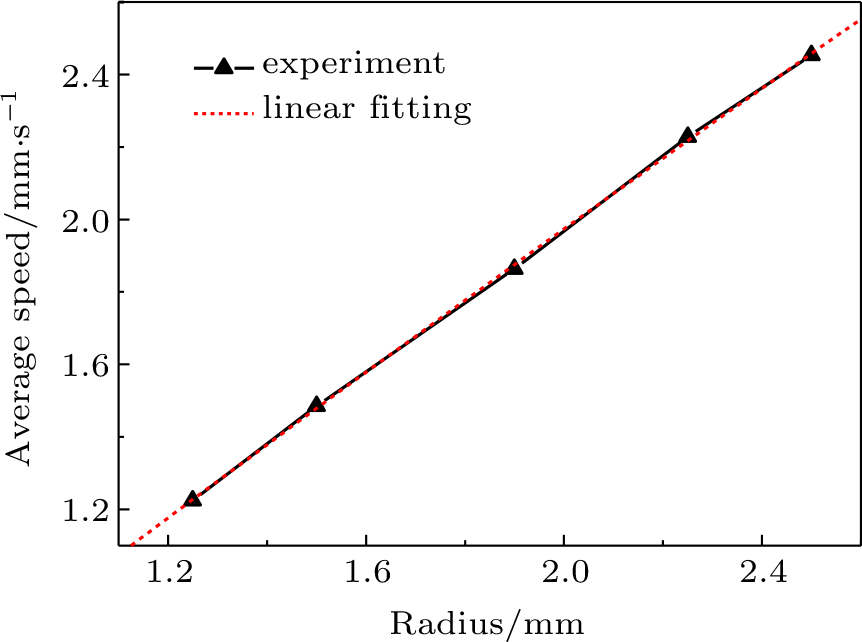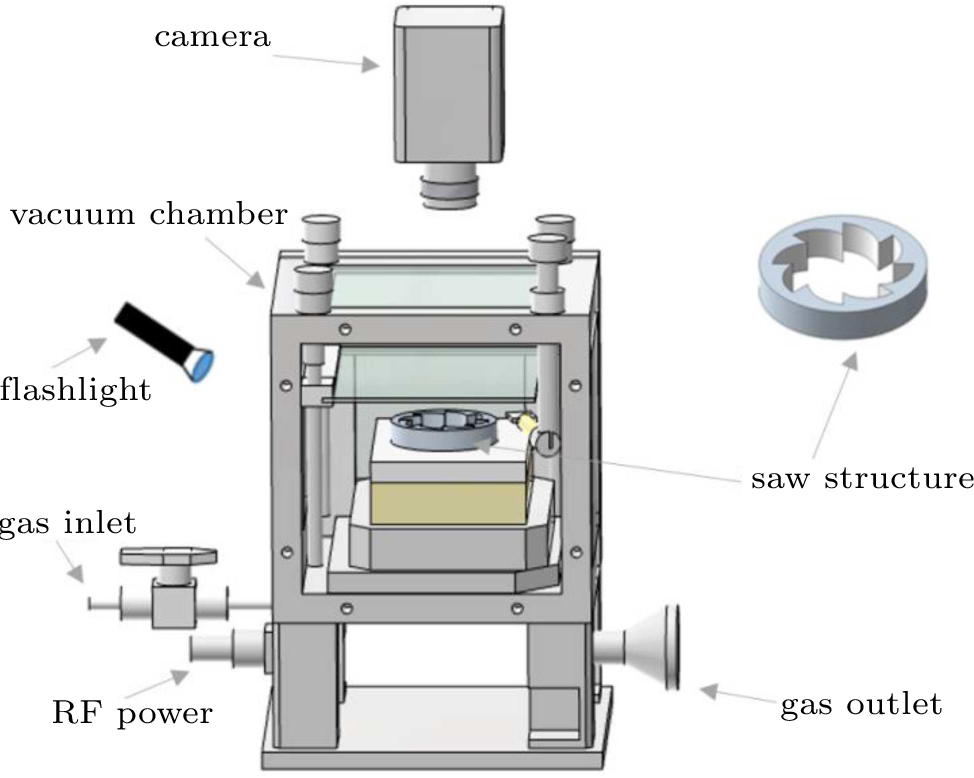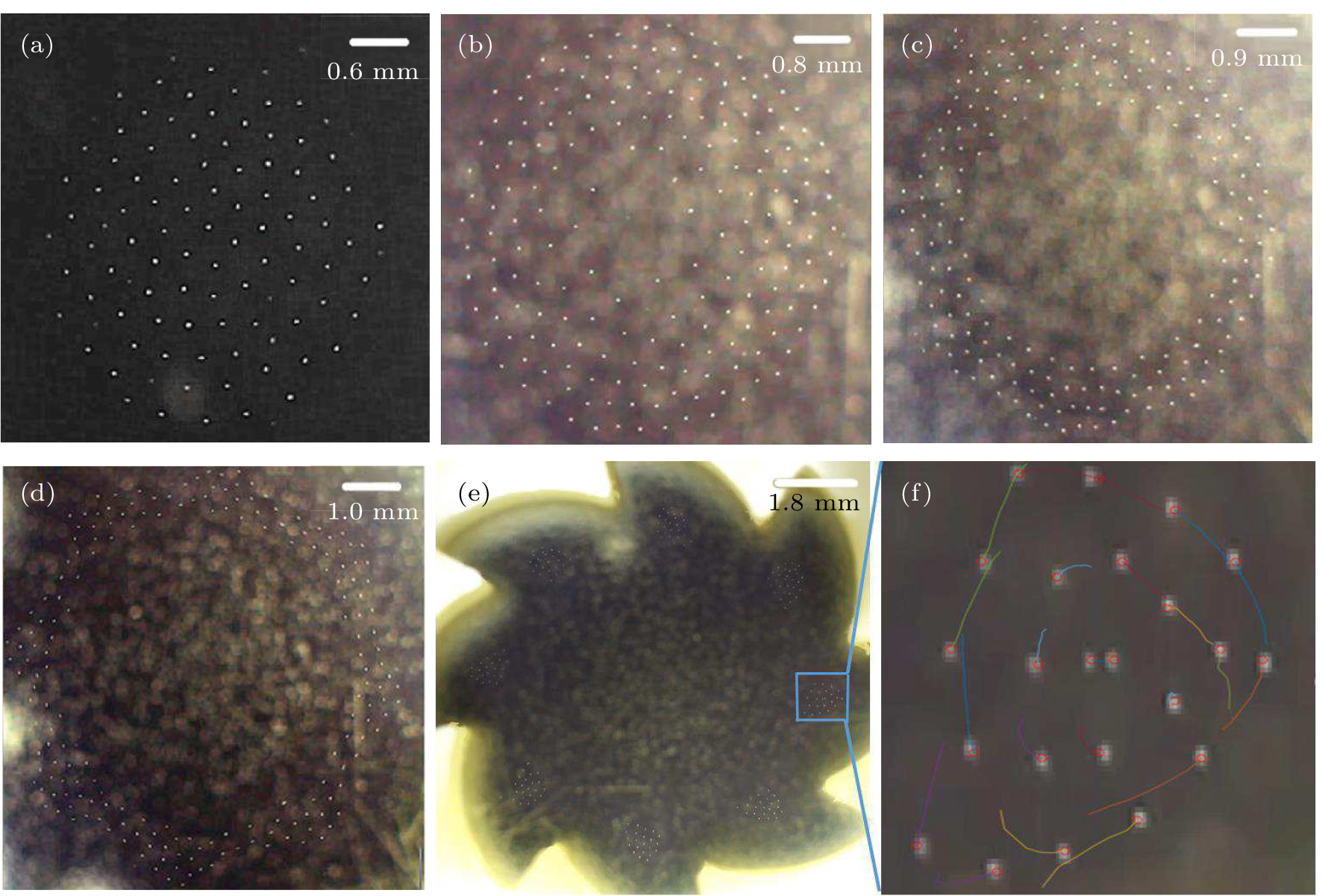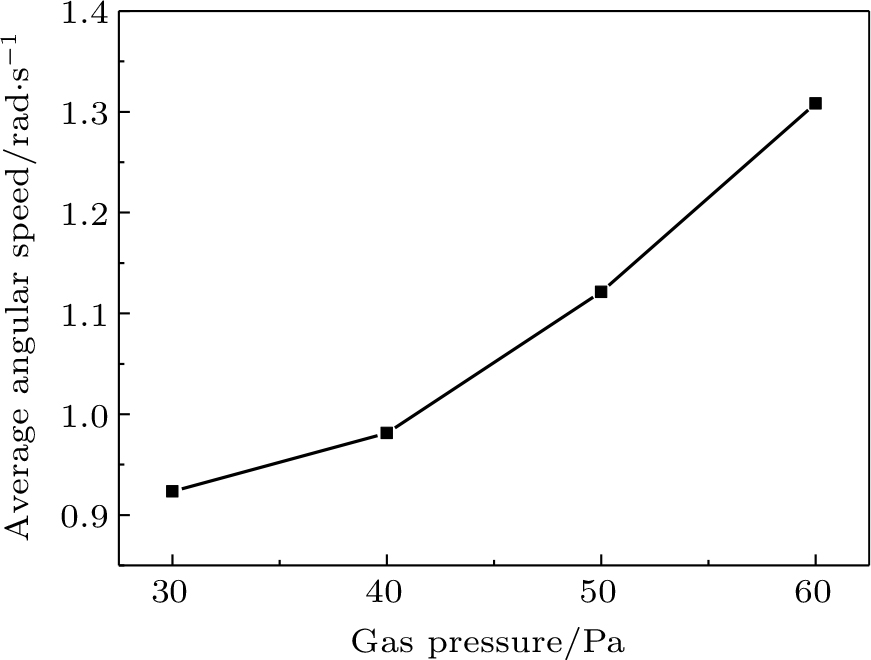† Corresponding author. E-mail:
Project supported by the National Natural Science Foundation of China (Grant Nos. 11205044 and 11405042), the Program for Young Principal Investigators of Hebei Province, China, the Natural Science Foundation of Hebei University, China (Grant No. 2011JQ04), the NaturalScience Fund for Excellent Young Scholars of Hebei Province, China(Grant No. A2017201099), and the Midwest Universities Comprehensive Strength Promotion Project, China.
A single vortex is obtained in radio-frequency capacitive discharge in argon gas. The dust subsystem is confined in the horizontal plane with an asymmetrical saw structure placed on the lower electrode. The vortex rotates as a whole along the long side of the saw-teeth. Asymmetry of the saw structure plays an important role in the rotation of the vortex. Nonzero curl of the total force resulting from the local ion flow and the electric field in the plasma sheath could be attributed to the persistent rotation of vortex.
Dusty plasma consists of electrons, ions, neutral gas atoms, or molecules, and charged dust grains, which has attracted much attention in the fields ranging from astrophysics, the semiconductor industry to the laboratory.[1–4] The grains immersed in plasma could acquire more than thousands of elementary charges and couple strongly via Yukawa interaction. They can be visualized directly and tracked easily by a camera. Therefore, dusty plasma opens up possibilities for studying a variety of physical phenomena such as phase transition, transport, and wave at the most elementary kinetic level.[5–13]
Vortex motion is often observed in stirred liquid such as whirlpools in the wake of boats and the winds surrounding a tornado. In the presence of external forces, a vortex could rotate persistently around an axis line and has non-zero vorticity away from the core. In recent experiments, vortex motions were also observed in dusty plasma both under microgravity and on the earth.[14–16] Bi-vortices, which means a couple of vortices rotating clockwise and anticlockwise, respectively, often appears symmetrically near a dust void or a probe.[17] By reversing the effective potential of the probe with respect to the plasma potential, vortices could reverse their rotation directions. At present, the observed vortices occur at the boundary of the bulk plasma, i.e., near the sheath, where the spatial distributions of plasma parameters such as electron temperature, ion density, electric field, and grain charge are inhomogeneous. If the ion density gradient is not parallel to the electric field, the curl of the ion drag force is nonzero, which could drive the motion of vortices.[18] Vaulina et al. illustrated another mechanism that charge gradient together with gravity force could result in the motion of vortices.[19] Recently, the transition from multiple to single dust vortex is observed in inductively coupled RF discharge, and the vortex originates from the charge gradient of dust particles which is orthogonal to the ion drag force.[10] In a direct current glow discharge plasma, the gradient of ion density and grain charge are measured experimentally and they are attributed to the formation of the vortex.[21] To our knowledge, all those vortices occur in the form of a couple of co-rotations or in the vertical plane. The interaction between the bi-vortices and the gravity force make it difficult to understand well the dynamics of vortices in dusty plasma. Here, we report a single vortex obtained in a designed saw structure in the horizontal plane. This vortex rotates as a whole along the long side of the saw-teeth. We confirm that the asymmetry of the saw structure plays an important role in the vortex rotation.
The experiments are performed in a vacuum chamber filled with argon as shown schematically in Fig.
Figure
Dusty vortices in Figs.
 | Fig. 4. Radial distribution of the average speed of grains at a gas pressure of 40 Pa and an rf power of 15 W. Dashed line represents the linear fitting. |
The average angular speed of vortex increases with the gas pressure changing from 30 Pa to 60 Pa as shown in Fig.
Several forces act on the grains and the curl of the total forces is nonzero, which can overcome the friction from the neutral gas and gives rise to the formation of vortex of grains. In the vertical direction, the gravitational force is balanced by the electric force from the sheath of the low electrode. We do not consider them here because the vortex performs rotation nearly in a horizontal plane. In the horizontal direction, the situation becomes complex due to the asymmetry of the saw-teeth. The asymmetrical saw plays an important role in forming the vortex. The plasma sheath would have the approximate shape of the saw-teeth. The thickness values of sheath are different at different positions of the saw structure because the thickness is related to the curvature of the saw-teeth.[22] At the tip (bottom) of the saw-teeth, the thickness of sheath is small (large). Because the thickness values of sheath at the tip and the bottom of saw-teeth are different, the gradients of plasma parameters, such as ion density, electron temperature, and grain charge, appear near the saw teeth in the horizontal plane. Local ion flow would appear near the saw-teeth due to the inhomogeneous plasma parameters. Because of the asymmetry of the saw-teeth, local ion flows from the long edge of the saw-teeth have different features (e.g., the flow directions) from that from the short edge of the saw-teeth. It would cause a net ion drag force in the tangential direction, which results in the formation of vortex. In addition, several other possibilities could also contribute to the vortex motion. First, the charge quantity deposited on grain has spatial or temporal variation across the sheath. When the charge gradient is not parallel to the electric field, the curl of the electric field and the charge gradient could be nonzero, which could drive the vortex motion of grains.[19] Second, there exists non-parallelism between the ion density gradient and the ion velocity gradient at the corner of saw. Therefore, a torque resulting from the nonconservative nature of the ion drag force gives rise to the formation of a vortex.[15] Third, if temperature gradient exists, thermal gas creep appears and convection of neutral gas could result in the grain vortices.[20] In our experiment, the effect of the temperature gradient near the saw-teeth can be negligible because the grains located far from the saw-teeth at low gas pressure can still perform rotation. Therefore, the combination of the inhomogeneous electric force and the inhomogeneous ion drag force from the long and the short edges of the saw-teeth could lead to the formation of vortex in our experiment. Due to the periodicity of the saw structure, the torque from each slant could be superimposed to drive a single vortex.
The asymmetry of the saw-teeth is a necessary condition for the formation of a vortex. If we flip the saw structure from up to down, the rotation direction of the vortex would reverse accordingly. In addition, we test a symmetrical saw structure in experiment, i.e., the two edges of one saw-tooth have the same lengths. No vortex is obtained even at the same experimental parameters as shown above. Hence, we can draw a conclusion that the asymmetry of the saw-teeth gives rise to nonzero curl of the total forces, which drives the vortex rotation.
In this work, we experimentally investigate the vortex rotation observed in an asymmetry saw structure in dusty plasma. The vortex always rotates clockwise as a whole due to the strong coupling among the grains, i.e., along the long side of the saw-teeth. With increasing gas pressure, grains tend to approach the asymmetric saw boundary, and the average angular speed increases accordingly. Nonzero curl of the inhomogeneous electric force and the inhomogeneous ion drag force from the long and the short edges of the saw-teeth could lead to the formation of a vortex in our experiment. Comparative experiments are performed and it is found that the asymmetry of the saw structure is a necessary condition for the formation of a vortex. We believe that the bi-vortices observed by other groups also originate from the asymmetry of the spatiotemporal distribution of plasma parameters.
| [1] | |
| [2] | |
| [3] | |
| [4] | |
| [5] | |
| [6] | |
| [7] | |
| [8] | |
| [9] | |
| [10] | |
| [11] | |
| [12] | |
| [13] | |
| [14] | |
| [15] | |
| [16] | |
| [17] | |
| [18] | |
| [19] | |
| [20] | |
| [21] | |
| [22] |





